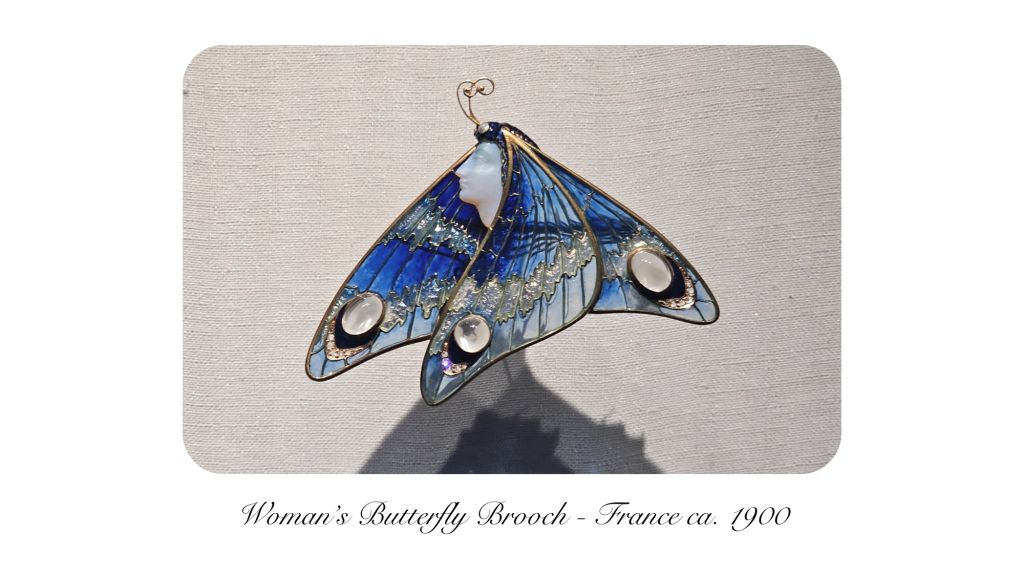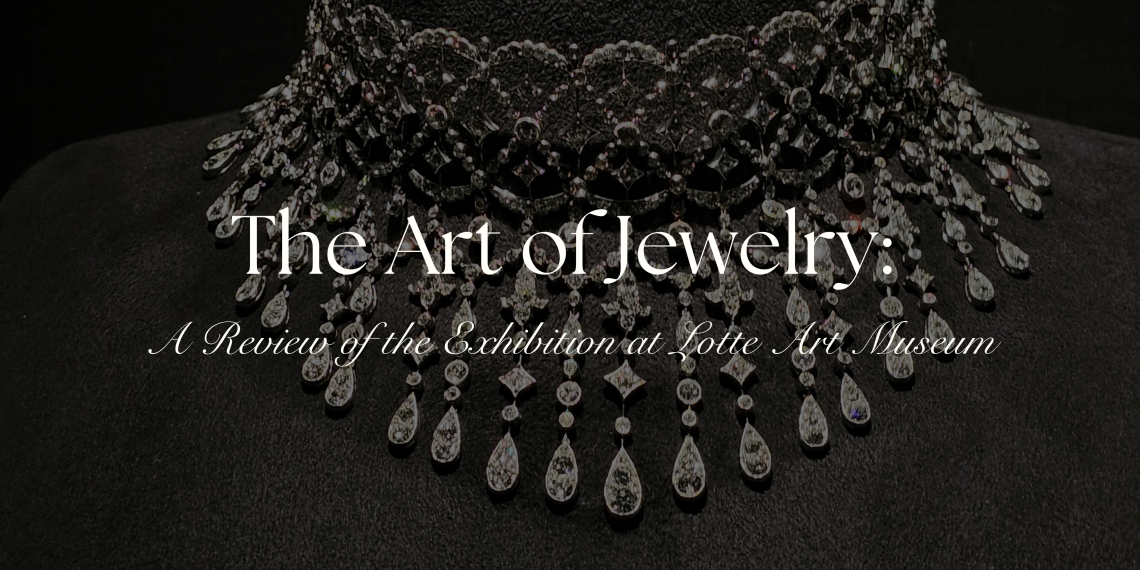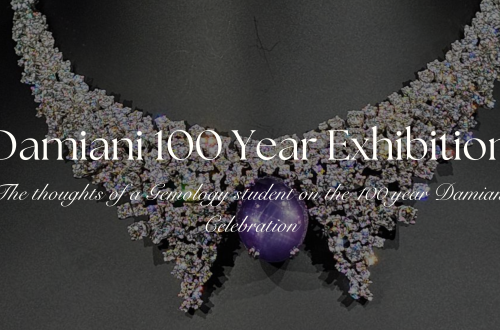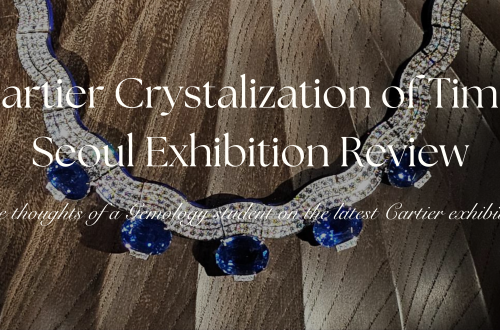Jewelry is more than ornamentation; it’s a window into history, culture, and artistic expression. A few days ago, I had the privilege of attending “The Art of Jewelry” exhibition at the Lotte Art Museum in the iconic Lotte Tower, Seoul. The experience offered a dazzling journey through the evolution of jewelry, but like any exhibition, it had its highs and lows.
Here’s my detailed review, divided into the highlights of each section and an overall critique of the presentation.
A Chronological Journey Through Jewelry History
One of the standout aspects of the exhibition was its thoughtful layout. Divided into distinct sections, it took visitors on a chronological exploration of jewelry, from ancient times to contemporary masterpieces. This approach allowed for a deeper understanding of how jewelry has evolved, reflecting changes in society, technology, and aesthetics.
1. Ancient Jewelry: Artifacts or Jewels?
The first section showcased ancient jewelry, with pieces that spanned millennia. Seeing these artifacts presented as jewelry rather than as historical relics was a refreshing perspective. Typically, such pieces are displayed in museums as part of broader lifestyle exhibits or archaeological contexts. Here, however, their artistry and craftsmanship were emphasized.

From delicate gold necklaces to intricately carved gemstones, this section highlighted how jewelry has always been a blend of function, beauty, and status. It was fascinating to see the innovation and skill of ancient jewelers who worked without the tools or technology we have today.
2. Religious Jewelry: The Crosses

The next section delved into the significance of jewelry in Christianity, focusing on crosses adorned with precious stones. As a Christian, I was particularly drawn to this section. The ornate designs and the symbolic use of gems made these pieces both spiritually profound and visually stunning.

However, I couldn’t help but feel that the exhibit lacked diversity in its exploration of religious jewelry. While Christian pieces were well-represented, other faiths—many of which have rich traditions of jewelry-making—were absent. For instance, Islamic cultures have a long history of exquisite gemstone-encrusted jewelry, and Hindu traditions boast stunning temple jewelry and bridal ornaments. Including these would have added a more inclusive and holistic narrative.
3. Engagement Rings: A Tradition of Love
One of my favorite sections was dedicated to engagement rings, showcasing a timeline of this cherished tradition. The display included rings from centuries ago, each with its unique story and design. I couldn’t help but connect this exhibit to a previous blog post I wrote on the tradition of engagement rings, which explores their cultural significance and evolution.

This section offered a delightful mix of sentimentality and history, with everything from modest antique bands to lavish diamond-studded creations. It was a reminder of how love and commitment have been celebrated through jewelry across time and cultures.
4. The Luxury Houses: Cartier, Boucheron, and Chaumet
No jewelry exhibition would be complete without pieces from the great luxury houses. Cartier, Boucheron, and Chaumet were prominently featured, showcasing their iconic designs and impeccable craftsmanship.

These pieces were a testament to the enduring legacy of these maisons, which continue to set the standard for high jewelry.

The presence of these renowned brands also served as a bridge between historical and modern jewelry, highlighting how traditional techniques and timeless aesthetics continue to inspire contemporary designs.
5. Art Nouveau: A Feast for the Eyes
As an admirer of the Art Nouveau style, I was thrilled to see a section dedicated to this artistic movement. The exhibit featured pieces adorned with flowing lines, natural motifs, and an ethereal beauty that epitomized the period. From delicate enamel work to vibrant gemstones, these creations celebrated the harmony between art and nature.

The Art Nouveau section was thoughtfully curated, capturing the innovation and creativity of jewelers like René Lalique, whose work defined the era. This was, without a doubt, one of the highlights of the exhibition for me.
6. Tiaras and Parures: The Grand Finale
The final section was an awe-inspiring display of tiaras and parures (matching jewelry sets). These pieces, often associated with royalty, were nothing short of mesmerizing. The craftsmanship, the sheer volume of gemstones, and the sense of grandeur they conveyed left me speechless.

Tiaras have always held a special place in the world of jewelry, symbolizing power, elegance, and prestige. This section beautifully concluded the exhibition, leaving visitors with a sense of wonder and admiration.
Overall Impressions
While the exhibition excelled in many areas, it wasn’t without its shortcomings. Here’s my breakdown of what worked well and what could have been improved:
What Worked Well
- Curation: The chronological layout and thematic sections made for a cohesive and educational journey through jewelry history.
- Diversity of Pieces: From ancient artifacts to modern luxury, the variety of styles and eras kept the exhibition engaging.
- Art Nouveau Section: This was a personal favorite, with its impeccable selection and attention to detail.
- Engagement Rings and Tiaras: These sections offered a sentimental and regal touch, appealing to a wide audience.
What Could Be Improved
- Lighting: The lighting was not ideal for viewing jewelry. Reflections from random exit signs and overly bright or dim spots detracted from the experience.
- Display Heights: The stands were quite high, making it difficult to see some pieces properly, even for someone tall like me. For those of shorter stature or individuals using wheelchairs, this would likely have been even more challenging.
- Accessibility Options: The exhibition only offered audio commentary, which may not be suitable for everyone. Additional options like braille descriptions or visual aids could improve accessibility.
- Cultural Representation: While Christian jewelry was beautifully showcased, the lack of representation for other religions’ jewelry traditions was a missed opportunity for inclusivity.
- Price Point: Compared to other jewelry exhibitions in Seoul, this one was relatively expensive, which could be a deterrent for some visitors.
“The Art of Jewelry” exhibition at the Lotte Art Museum was a wonderful opportunity to explore the rich history and artistry of jewelry. Despite its minor flaws, the thoughtful curation and breathtaking pieces made it a worthwhile experience for jewelry enthusiasts like myself.
If you’re in Seoul and have a passion for gemstones, history, or design, this exhibition is a must-visit. Just be prepared for a few viewing challenges and consider bringing a bit of extra patience for navigating the displays. Ultimately, the journey through centuries of jewelry artistry is well worth the effort.




